Growing tomatoes in your garden brings a special kind of joy, but tomato diseases can present significant challenges. From the moment you plant those seeds or seedlings, you’re not just growing tomatoes; you’re also protecting your plants against diseases and pests that can threaten them. My goal is to arm you with knowledge and strategies to keep your tomato plants healthy and productive. By understanding common tomato diseases, how to prevent them, and how to address them organically, we can ensure our gardens remain vibrant and fruitful.
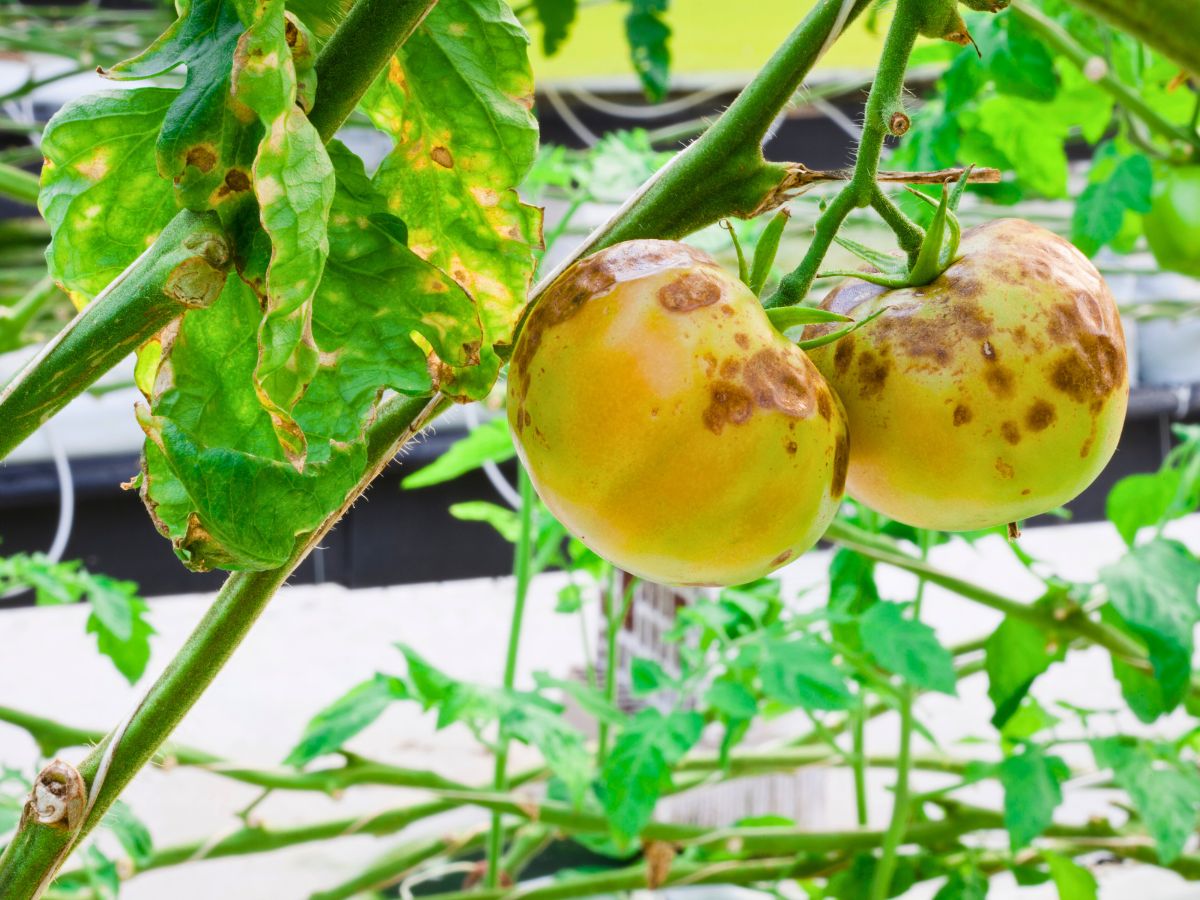
Identifying Common Tomato Diseases
Tomato plants are like the crowning jewels of the vegetable garden, bringing juicy, bright fruits to our tables. However, they can fall prey to a few sneaky diseases. Don’t worry. You can identify and tackle these common ailments with little knowledge and attention. Let’s dive in.
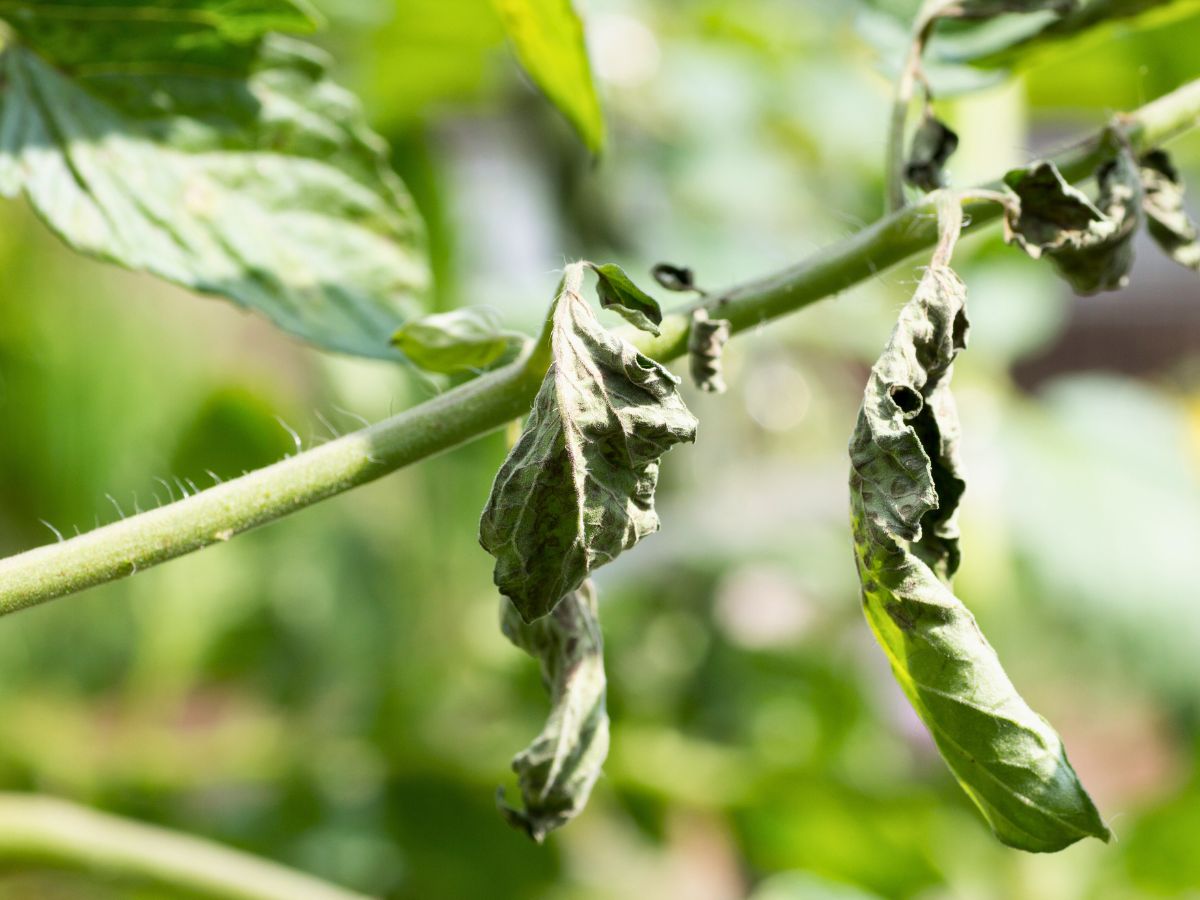
First Response to Tomato Disease
The first thing you should do with any sign of disease is remove affected leaves and dispose of them properly—either burn them away from the garden or place them in a garbage bag for trash removal, but never put them in your compost. Keep the ground under the plants clean and mulched to prevent spores from splashing onto the leaves. Ensure good air circulation by spacing your plants appropriately and pruning your tomatoes properly. Water at the base of the plants to keep the leaves dry and reduce the chances of infection spreading.
You can read about the proper spacing of your plants in our companion article on growing tomatoes. You can also learn how to properly prune your tomato plants in our companion article.
Early Blight
This one’s a bit of a sneak thief. It attacks your tomato plants with dark, concentric circles on older leaves and on the tomatoes, making them look like targets. Spotted early, we can halt its mischief.
Cause: Alternaria fungus (Alternaria solani). Affects tomatoes and potatoes.
Late Blight
This disease is quick and devastating. Look out for dark, oily spots on leaves and stems. The key here is swift action using the removal technique above. If it’s rampant, consider copper fungicides as your last line of defense.
Cause: Potato blight fungus (Phytophthora infestans). Rapidly destroys tomato and potato plants.
Septoria Leaf Spot
Imagine tiny, perfectly round polka dots on your tomato leaves, but less charming. This disease makes its mark with small, greyish spots surrounded by yellow halos. Kick it to the curb by removing infected leaves and avoiding overhead watering. A clean garden bed is your best friend here.
Cause: Septoria fungus (Septoria lycopersici). It mainly affects tomatoes.
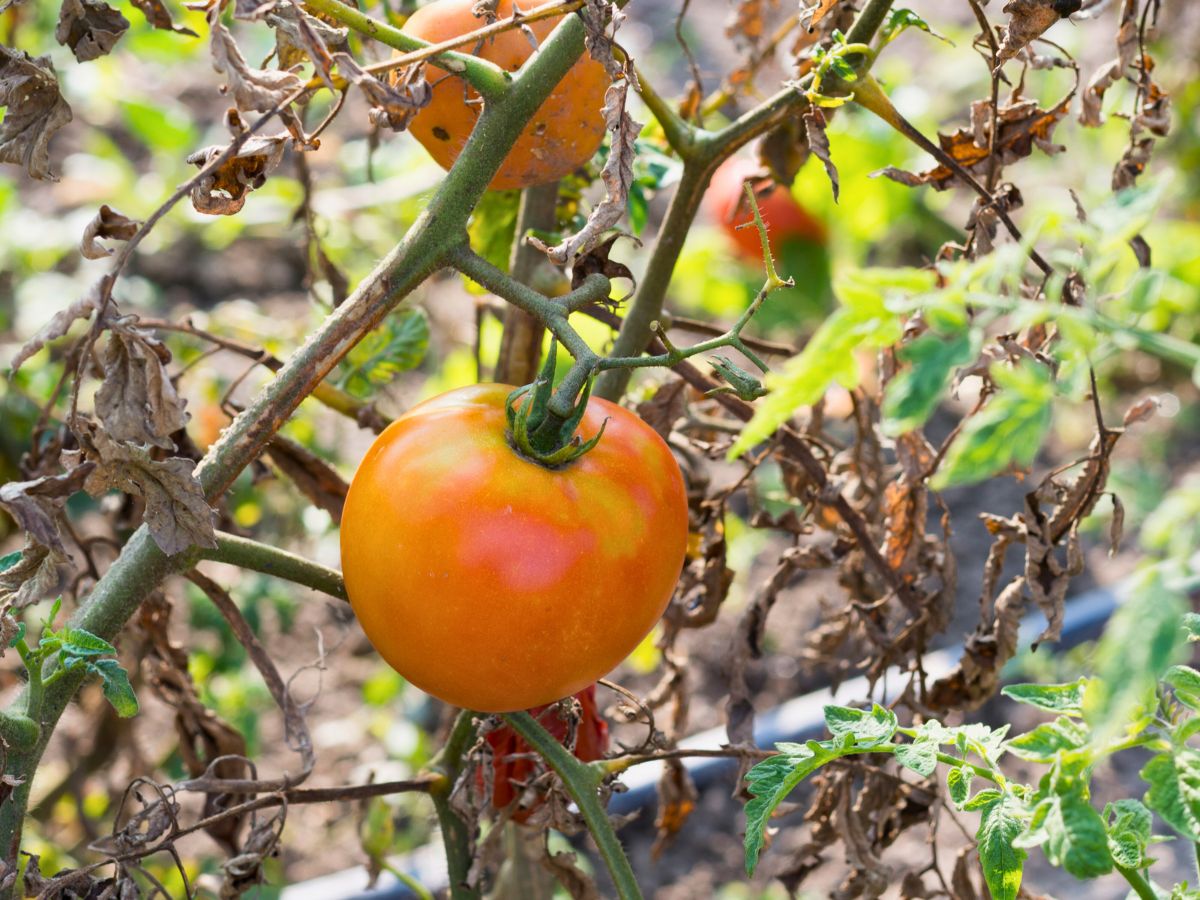
Fusarium and Verticillium Wilts
These two are the sneaky underliers working their way up from the soil, causing leaves to yellow and wilt. Unfortunately, once a plant is infected, there’s no cure, but we can outsmart them! Use resistant varieties and practice crop rotation like your garden’s life depends on it because it does! You can read about crop rotation in our companion article.
Cause: Fusarium fungus (Fusarium oxysporum species complex). Infects plants through the roots, blocking water vessels and causing wilting. Verticillium fungus (Verticillium dahliae and Verticillium albo-atrum). Similar to Fusarium, it causes yellowing and wilting of leaves.
We always recommend using a garden journal to keep track of crop rotation. If you are a member of the TFL Community, you can download our FREE garden planner and journal from the Member’s Only Library. You can join us here.
Blossom End Rot
Not exactly a disease but a condition that’s heart-breaking when spotted. This ailment shows up as a dark, sunken spot on the bottom of your fruit. The culprit? A calcium imbalance. Ensure consistent watering, and consider adding calcium to the soil to give your tomatoes what they need.
Read all about the dastardly blossom end rot in our article. In our companion article, you can also learn how to add calcium to the soil.
Tomato Mosaic Virus
Think of your tomato’s leaves looking like a patchy quilt, with yellows and greens mottling together. This virus is a tough one, transmitted by tools or insects. The best defense is prevention; sanitize your tools and manage pests with vigilance.
Cause: Various mosaic viruses (e.g., Tobacco mosaic virus – TMV, Cucumber mosaic virus – CMV). Spread by insects or contaminated tools, causing mottled leaves and stunted growth.
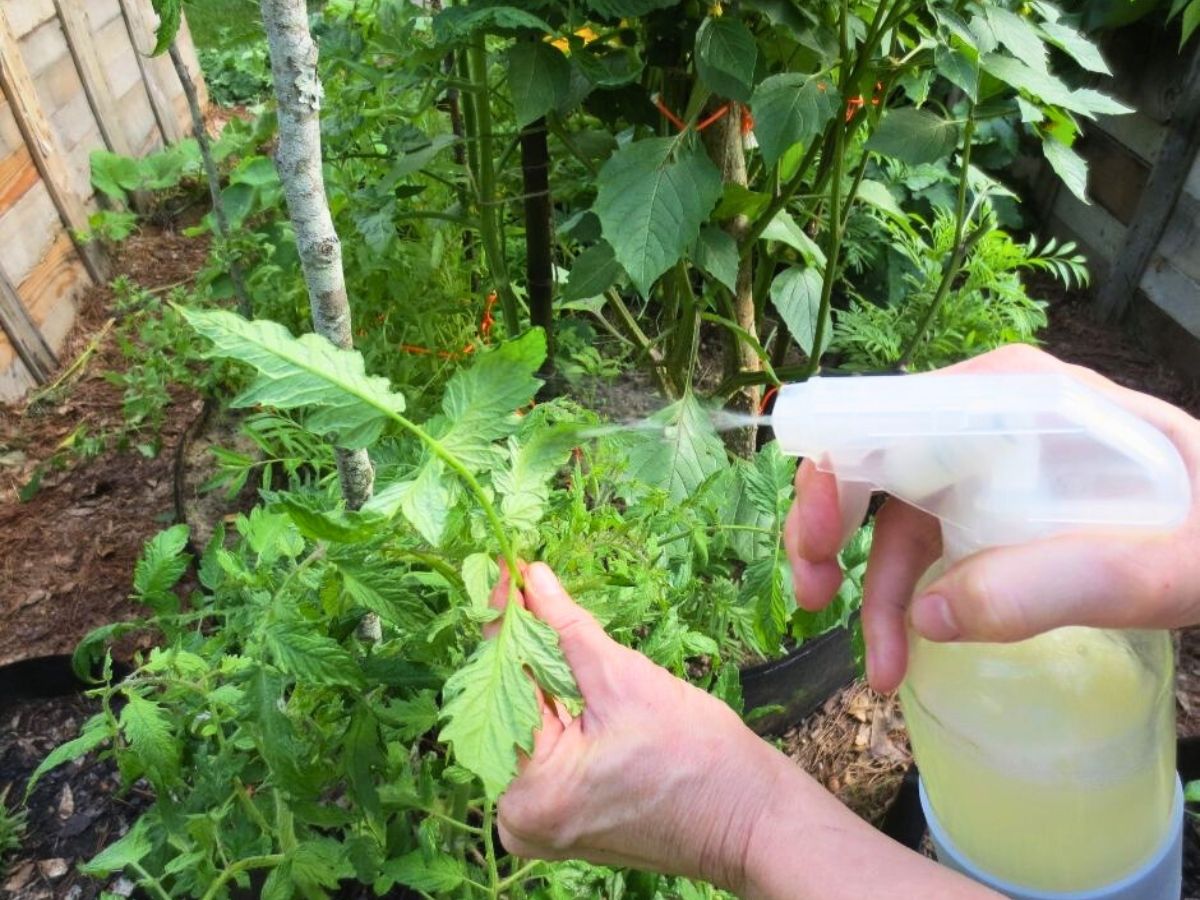
Using Neem Oil for Prevention and Treatment
Neem oil is an excellent organic option for preventing and treating several common tomato diseases. It works by disrupting the life cycle of pests and has antifungal properties that help control fungal diseases like early blight and septoria leaf spot. Here’s the simple recipe we use:
Neem Oil Spray Recipe:
- 1 tablespoon pure, cold-pressed neem oil
- 1 teaspoon baking soda
- 1 teaspoon castile soap or mild dishwashing soap
- Water to fill a 1/2 gallon spray bottle
Mix all the ingredients in the spray bottle and shake well. Spray the solution on your tomato plants, covering both the tops and undersides of the leaves. Apply in the early morning or late evening for best results to avoid sunburned tomato leaves. You can read about sunburned tomato leaves in our article.
Using neem oil regularly can help prevent diseases and keep your tomato plants healthy and productive throughout the growing season. It can even be used on stink bugs! Read about it in our article.
Protecting Against Tomato Diseases
Diseases can be destructive in the garden and can happen seemingly overnight. You can help your plants stand strong against these threats with diligence and preventive care. Here are some essential steps to keep your tomato plants healthy and thriving.
Plant Selection: The First Line of Defense
Your garden begins with selecting the right plants. Opt for disease-resistant heirloom varieties more likely to thrive in your local conditions. Your local nursery or seed catalog should indicate which varieties offer this resilience. Remember, a healthy start leads to a robust life. To better understand heirloom vs hybrid tomato plants, read our article.
Proper Plant Spacing
Give your tomatoes ample space to ensure good air circulation. Crowded plants create a haven for moisture retention, which welcomes disease. Follow the spacing guidelines recommended for your tomato variety, usually found on the seed packet or plant tag, or for more information check out our article on growing organic tomatoes.
Practice Proper Crop Rotation
Proper crop rotation is critical to prevent diseases from becoming a permanent fixture in your soil. Avoid planting tomatoes (and their relatives from the nightshade family, such as peppers and eggplants) in the same spot year after year. Aim for a three-year rotation cycle to keep soil-borne diseases at bay.
Proper Watering
When it comes to watering your garden, timing and technique are crucial. Always water at the soil level and avoid overhead watering. Watering early in the morning is ideal as it allows the plants to dry off during the day, reducing the risk of mold, mildew, and fungal diseases that thrive in wet conditions. If you must water in the evening, be sure to water the base of the plants, avoiding wetting the leaves to minimize the risk of disease.
For a consistent approach, consider using soaker hoses or drip irrigation to deliver water directly to the soil, keeping foliage dry and reducing evaporation. This method ensures that the water reaches the roots effectively, preparing the plants for the heat of the day. Following these watering practices helps maintain plant health and prevents many common moisture and fungal growth issues in your garden.
Properly Prune and Stake Tomato Plant
Support your tomatoes right from the start. Use stakes or cages to keep plants off the ground, reducing the risk of diseases transferring from soil to leaves.
Prune lower leaves that seem too eager to brush the soil or look sickly. This improves air circulation around the base and limits the chances of soil-borne diseases leaping onto your plant. Remember, less is more; don’t overdo it, or you might stress the plant.
Our companion article explains how to properly prune and stake your tomato plants to help reduce the risk of tomato diseases.
Embrace Deep Mulch Gardening
Mulch is a barrier between your precious tomatoes and the host of diseases lurking in the soil. Lay a generous layer of organic mulch, such as straw or shredded leaves, around your plants. This will keep the soil moist, prevent weed growth (another disease culprit), and minimize soil splashing onto leaves during watering. Read about deep mulch gardening in our article.
Organic Treatment for Common Pests
Effectively managing common pests in the tomato garden with organic treatments is essential for maintaining plant health. Pests damage plants directly by feeding on them and acting as vectors for diseases, spreading harmful pathogens that can compromise your entire crop. You can combat pests and keep your garden productive using organic solutions.
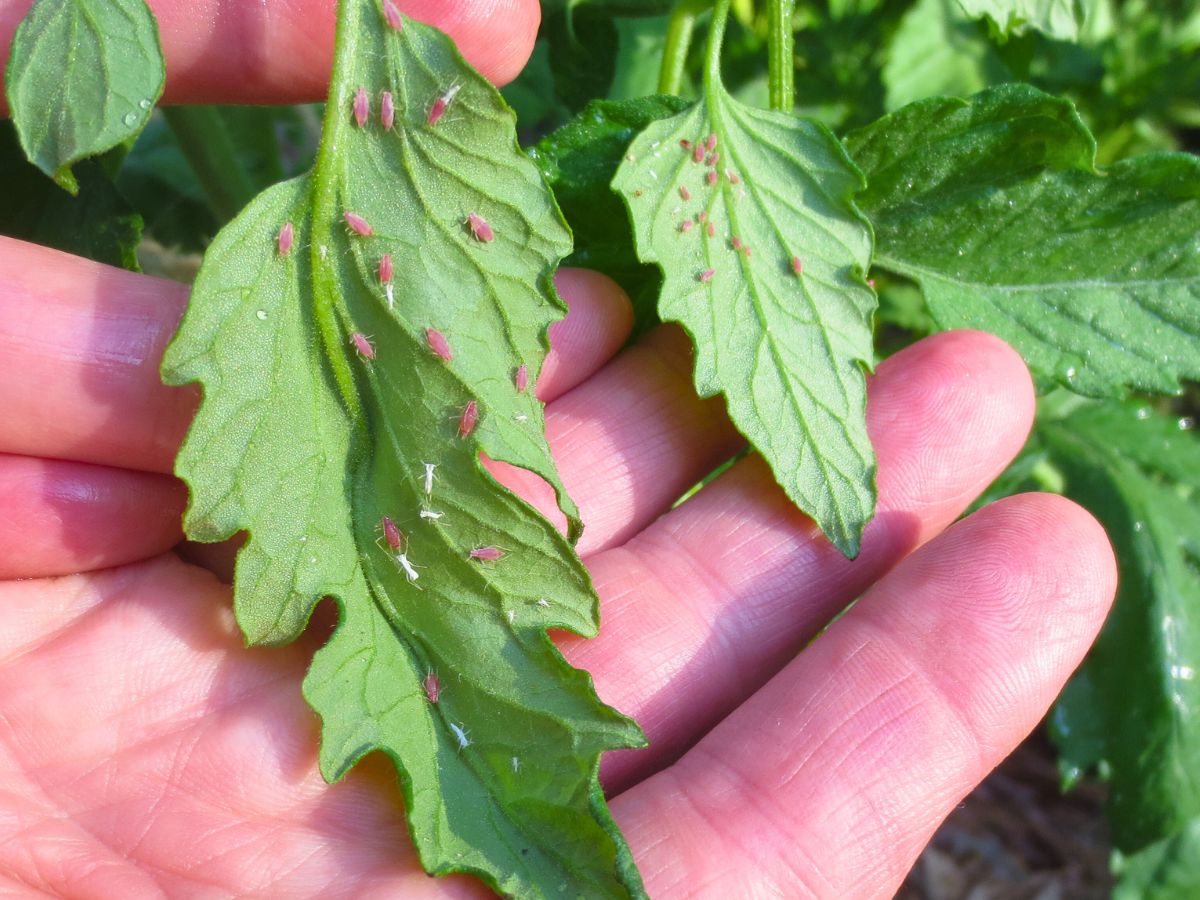
Aphids: The Tiny Invaders
Aphids are small sap-sucking pests that weaken tomato plants, making them vulnerable to common diseases. To tackle them without harsh chemicals, use our Neem Oil spray recipe I shared earlier in this article. It is a marvel as a natural insecticide, disrupting the life cycle of aphids.
Whiteflies: The Underleaf Dwellers
Whiteflies hide under tomato leaves, sucking plant juices and weakening your crops. Introducing beneficial insects like ladybugs into your garden can naturally reduce whitefly populations, as ladybugs are natural predators of whiteflies. A homemade garlic spray – made from minced garlic steeped in water – can also repel whiteflies when sprayed directly onto the plant leaves. The Neem Oil recipe earlier in the post works for them as well.
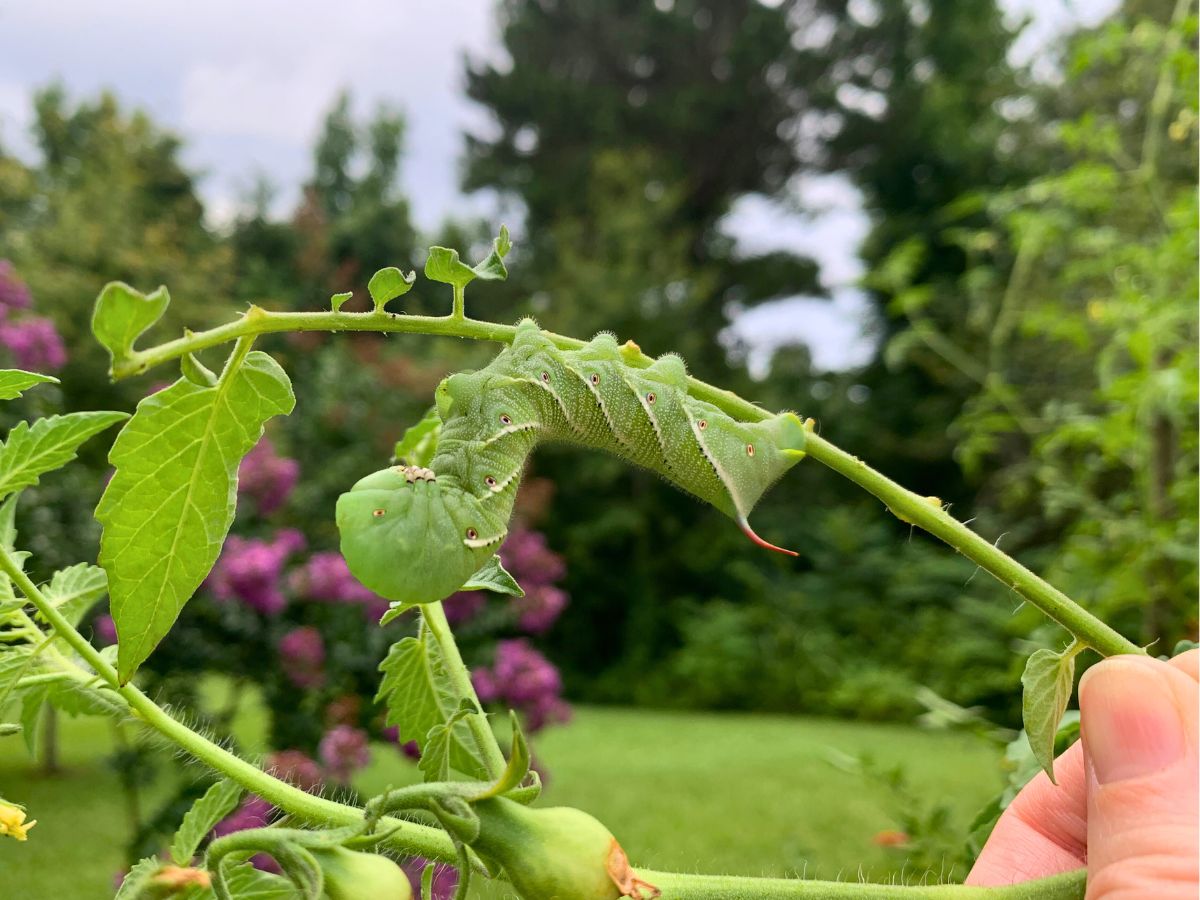
Tomato Hornworms: The Leaf Munchers
These large, creepy green caterpillars significantly damage tomato plants and can devastate whole plants overnight. One organic remedy is to manually remove them from plants in the early morning or late evening. Applying Bacillus thuringiensis (BT) to the foliage, a safe, natural bacterium, is an effective treatment that targets caterpillars without harming other insects. In our companion post, you can learn more about removing and preventing these alien-like creatures from your garden.
Spider Mites: The Invisible Thieves
Spider mites are tiny pests that suck the sap from plants, often causing yellowed, speckled leaves. Again, our Neem Oil spray offers an organic solution that disrupts spider mites’ reproduction and feeding habits, protecting your plants without synthetic chemicals.
Ensuring Success with Organic Pest Control
Remember the importance of early detection and regular monitoring in applying organic treatments. Most organic treatments are most effective when applied at the first sign of pest problems. Always test a small area of the plant before full application to ensure it doesn’t react negatively to the treatment.
Following these organic treatments and preventive strategies can protect your tomatoes from common pests and diseases. Combining these methods with the previously discussed preventive measures ensures your tomato garden will thrive naturally, yielding a bountiful, healthy harvest.
Wrap Up
Nourish your garden organically and enjoy the joys of gardening with peace of mind, knowing that you’re cultivating the earth responsibly and healthfully. Embrace the simplicity and efficacy of these organic solutions as we continue to cultivate a love for backyard harvests filled with the sun-ripened beauty of tomatoes.
Preventing common tomato diseases and pests is about creating an environment where tomatoes can flourish while minimizing the factors that foster disease. It’s a balance between attentive nurturing and harnessing nature’s defenses.
Remember to monitor your garden daily, use preventive measures like proper spacing and early morning watering, and apply organic treatments as needed. These steps ensure your tomatoes remain healthy and productive. Happy gardening, and may your diligent efforts bring forth bushels of juicy, disease-free tomatoes!
Feel free to share your gardening tips or any questions in the comments.
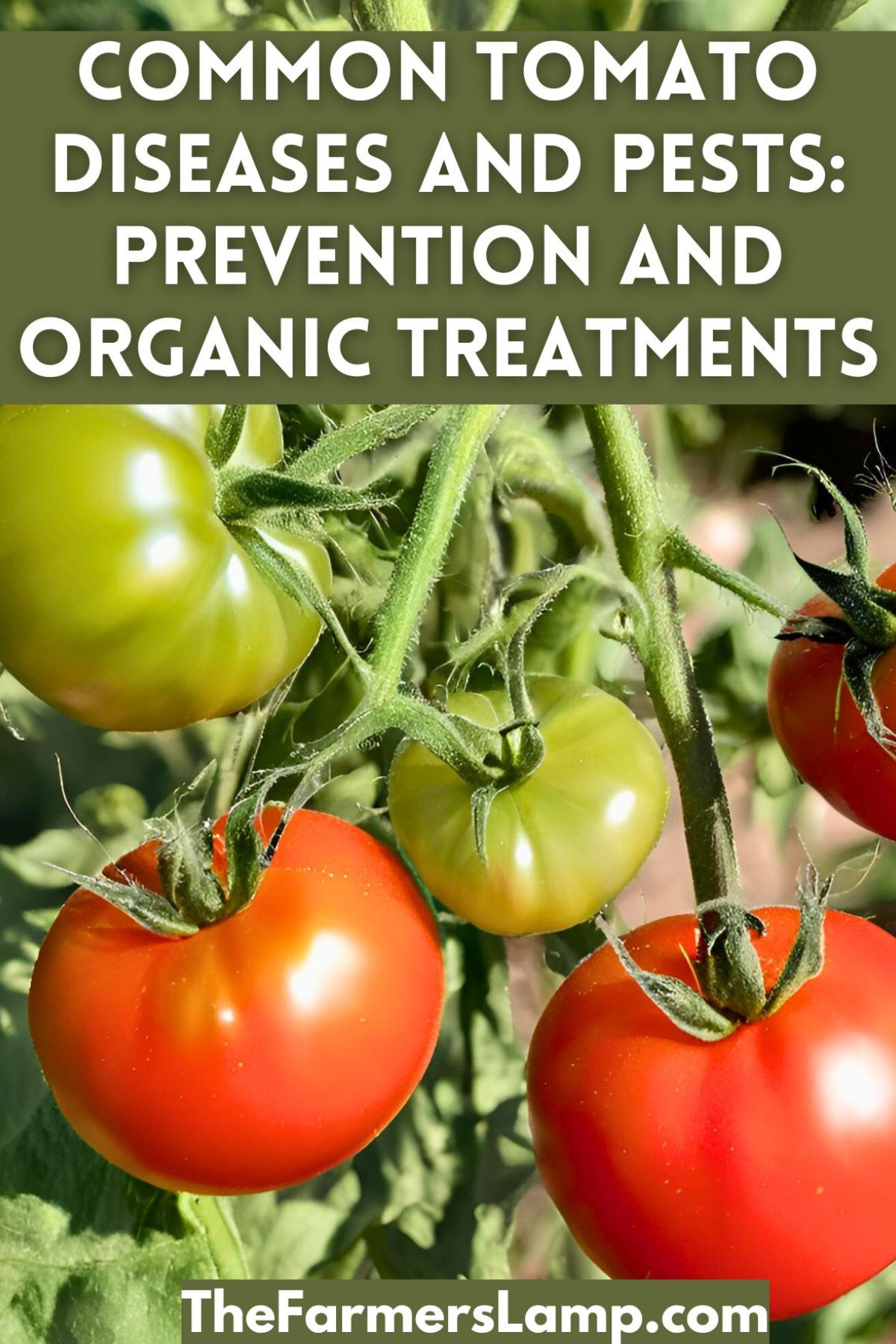




Leave a Reply